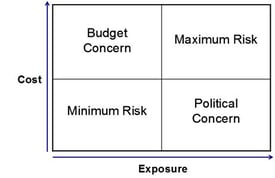
The American Heritage dictionary defines “partnership” as: A relationship between individuals or groups that is characterized by mutual cooperation and responsibility, as for the achievement of a specified goal.
For me, the key words are “mutual cooperation and responsibility”. The U.S. Postal Service (USPS) and mailers must mutually cooperate and share responsibility for both parties to be successful. So, in a format many of have seen on late-night television, let’s review the Top Five Keys to a Successful Partnership.
Number 5: Talk with each other.
Three words – communicate, communicate, and communicate.
Notice that this tip is titled “Talk with each other.” Not “Talk to each other.” A conversation involves speaking and listening.
What does this mean for the mailer? If you have an issue with a mailing or a delivery, don’t start the conversation with accusations and demands. If you begin with an adversarial approach, then you aren’t leaving the other person much room for a successful solution to your problem. It may feel good yelling at someone, but it doesn’t help the situation.
Instead, ask what went wrong, and how do you prevent it from happening again. If you think a rule or regulation has been unfairly used against you, explain why you feel that why, and then ask another question. Why does the clerk, manager, whoever, think you are wrong? Asking questions allows the other person to help you find an answer. Listen to the answer – it will help you in the future.
What does this mean for the Postal Service? Again, start a conversation by explaining the situation and asking questions. If a customer has a mailing that doesn’t qualify for a certain discount, explain why, and then ask how you can help them prepare for the future.
Seek out problems, before they arrive on the dock. We’ve seen a lot of changes over the last few years, and we’re going to see even more in the immediate future. PCCs and webinars provide information to USPS customers. That’s great. Time to take it another step. Business Network managers need to talk with the customers and make sure they understand the changes. Ask the customers what additional information they need, and ask what additional help they need.
If we talk with each other, we’ll have the mutual understanding needed for success.
Number 4: Respect each other.
Ralph Waldo Emerson wrote, “Men are respectable only as they respect”.
Our industry isn’t always the most respected profession. Much of that is due to unfounded stereotypes – whether humorous, like “Cliff the Mailman” from Cheers. Or perhaps relatively benign, like the concept of starting your career in the mailroom, and then working your way up the corporate ladder. And then the hurtful, like saying “going postal” to describe violent behavior.
How do we change this perception? First by being the true professionals that are the hallmark of this industry. Professionals who are experts at what they do, and demonstrate that through knowledge gained and industry certification.
Another important way to gain the respect of people from outside the industry is to respect each other from inside our industry. Mailers must respect the men and women of the US Postal Service, and postal employees need to respect the people who produce the mail that keeps them in business.
For mailers, respecting the USPS includes recognizing them as fellow professionals. As the son of a career Postal Service employee, I had the benefit of getting to know clerks, carriers, mail handlers, and postmasters as I was growing up. I’m not going to say that these groups got along with each other 100% of the time, but I did get the feeling that they knew they were on the same team.
As mailers, we need to be part of that team. When there’s an issue with your mail, inbound or outbound, you need to work with the USPS members of your team to resolve the problem. Don’t immediately assume that the “Postal Service screwed up.” Instead, show respect for your team members, and ask for help.
Similarly, at all levels, the USPS has to respect the professionalism of the mailer. An error in a mailing doesn’t mean the mailer is incompetent or is trying to “get away with something.” A mistake is just that, a mistake. How can you and the mailer work together to not only solve the problem, but also prevent it from happening again? Isn’t that a real win-win?
Mutual respect leads to mutual success.
Number 3: Look out for each other.
Watching out for each other is taking respect to the next level. In this step, you let each other know about what’s happening and help each other prepare.
What does this mean for mailers? If you have an extra-large mailing scheduled on the calendar, let your postal representative know ahead of time. Or, you may have a lot of returns coming in from a solicitation. Again, let the USPS know before the mail shows up. Work together to make plans for handling the volumes.
What does this mean for the USPS? Look out for your customers.









